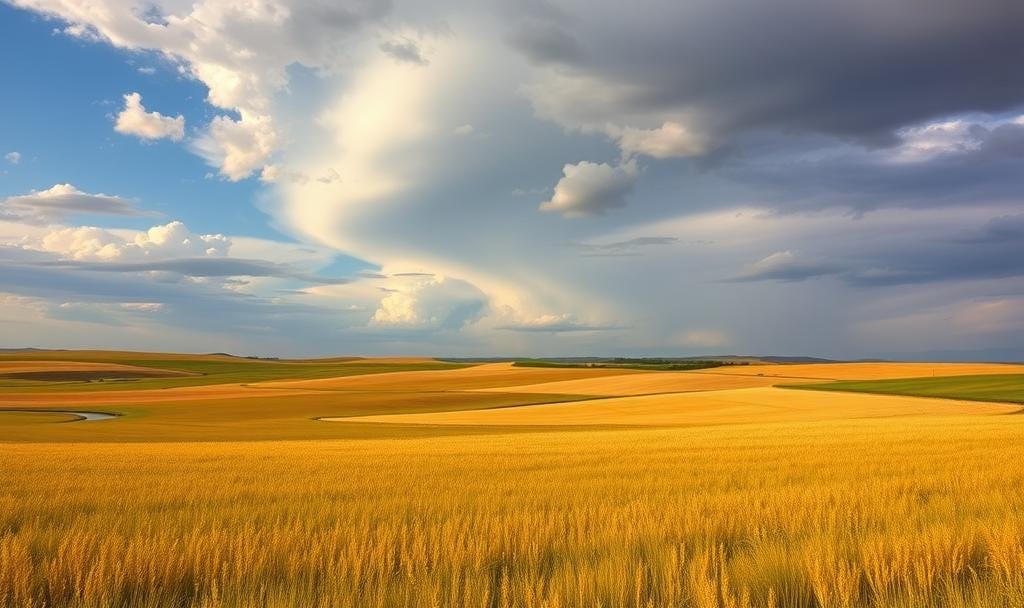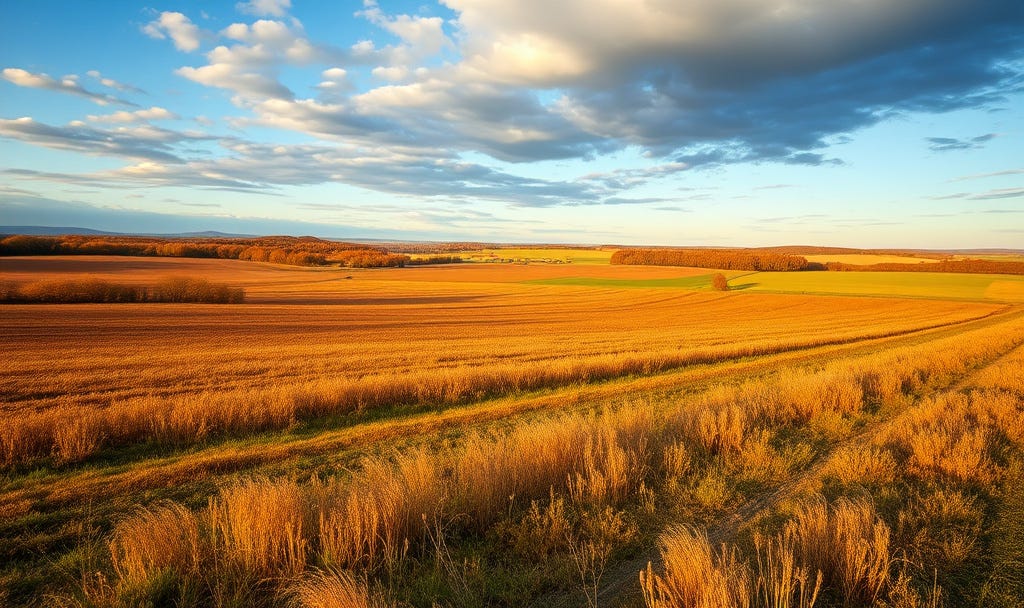
The Foretaste of Grace and the Vast Horizons of Guymon
I was born in Bakersfield, California, in the heart of the San Joaquin Valley—a place as unassuming as the soil from which it springs. Of this city, I know little beyond its role in my life’s story. What strikes me as significant, however, is where I drew my first breath: Mercy Hospital, a Catholic institution. Though my family was Methodist, the hands that cradled me—those first signs of human love—belonged to nuns. How extraordinary it seems now that the gentle ministrations of women who lived in the shadow of the Cross marked my earliest moments. In hindsight, it feels like a foreshadowing, a whisper of the path I would eventually walk, though it was simply a fact—a beginning.
From Mercy, my parents brought me home to the small, dusty town of Shafter, twenty miles away, though I remember almost nothing of it. My memories begin in earnest when, at one, my father’s work in agriculture uprooted us to Guymon, Oklahoma, a frontier town perched on the windswept plains of the Panhandle. It was there, amidst the endless horizons, that the first stirrings of something deeper took root in me—a longing I couldn’t name, a yearning that stretched as wide as the sky itself.
The Gift of Guymon
To know Guymon was to understand the beauty of simplicity. Nestled in the heart of the high plains, it was delightfully remote, a tiny outpost of six thousand souls surrounded by miles of prairie. The land was flat, the sky vast, and the rhythm of life as predictable as the seasons. And yet, that predictability had its own charm—a kind of steadiness, a quiet reminder of the world’s order.
Autumn was my favorite season, though it lacked the fiery splendor of New England. Here, the few trees that stood shivered in their faded brown cloaks, and the grass lay dormant. But the air—oh, the air! Cool and crisp, the air carried an almost tangible energy, as if the wind itself whispered eternity. Even now, I remember how the sight of those far-reaching plains, bathed in golden light, would fill me with awe. It was there, staring out over that vast and empty landscape, that I first felt the stirrings of contemplation—a desire to grasp something beyond myself. Though I didn’t yet understand it, those moments were my first steps toward the divine.
Guymon was a town deeply rooted in its values, a slice of small-town America untouched by the frenzied pace of the cities. Its brick Main Street was the heart of the community, alive with the hum of daily life and the laughter of high schoolers “dragging main” in their cars. There was something timeless about it, a sense of belonging that tethered us all together. Even as the storms of the 1960s revolutionized the wider world’s culture, Guymon remained steadfast—a place where people still revered modesty, faith, and family. It was, in many ways, like Joan of Arc’s home village; it was a New Domrémy, a quiet sanctuary removed from the battles raging just beyond the horizon.

The Lessons of a Small-Town Childhood
Though predominantly Protestant, Guymon’s religious unity stemmed from something deeper: a shared moral order. The Ten Commandments were more than words etched in stone; even those who weren’t deeply devout respected the moral structure they provided. Christianity, in Guymon, was more than a religion; it was the foundation of the community. Looking back now, I see how this quiet, Bible-based ethos reflected a faint echo of Christendom—a society ordered under the law of Christ, where virtue was the aspiration and obedience a source of stability.
But for all its virtues, Guymon also lacked something crucial: an understanding of tradition. Ours was a young town, in a young state, in a young country, and the richness of the past—the heritage of Catholic Europe—was absent from our consciousness. Our teachers taught us to revere the Reformation as Christianity’s glorious moment of “liberation,” but no one spoke of the blood it spilled or the treasures it discarded. I was blind to the beauty of the Church’s long history—the universities, the art, the saints. It was only much later, as I stood within the walls of a little Catholic church I had once ignored, that I saw the deeper truth: that Christ’s Church is not merely a collection of believers but a living, visible body, guided by an unbroken chain of apostolic succession.
This realization would come in time. For now, as a boy growing up in Guymon, I was simply grateful for the gift of a stable, moral community—a place that, in its own way, reflected the order and beauty of God’s creation.
Threads of Providence
Looking back, I see the hand of God weaving its way through even the smallest details of my childhood. There were three moments, in particular, that stand out as threads of providence. Mercy Hospital, my birthplace, was the first; nuns enveloped me in their prayers before I could even speak. The second was my unlikely study of French in high school, a language that seemed out of place in the Panhandle but would later become a gateway to the saints of the French School of Spirituality. The third was a fleeting encounter with a beautiful girl at the local swimming pool—a moment that would take seven years to bear fruit but would forever change the course of my life.
These moments, scattered like seeds, seemed insignificant at the time. But now, from the vantage point of faith, I see how they were preparing me for the journey ahead. It is a journey that will take us from the plains of Oklahoma to the spiritual heights of Christendom, through forests of doubt and storms of suffering, and ultimately to the radiant light of God’s grace.
Reflections from the Castle Tower
As I stand now, looking back from the castle towers of faith, the landscape of my life unfolds before me like a great map. The paths and rivers, the mountains and valleys—they are all connected, though at the time I could not see how. Guymon, with its vast skies and humble ways, was the beginning of it all. It taught me to listen to the silence, to see beauty in simplicity, and to yearn for something greater than myself.
And so I invite you, as you read this, to consider your own life. Where have the quiet gifts of providence been at work? What sowed those seeds long before you realized their significance? Perhaps, like me, you find that the vast, empty places—the moments of stillness and longing—were not empty at all. They were the first whispers of grace, calling you to something greater. And that, I believe, is a journey worth taking.

